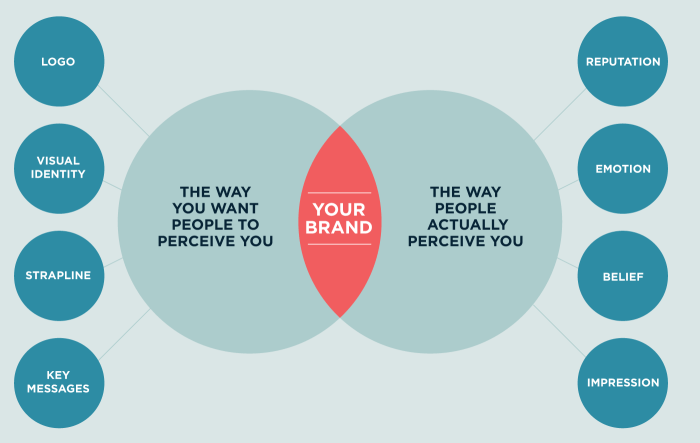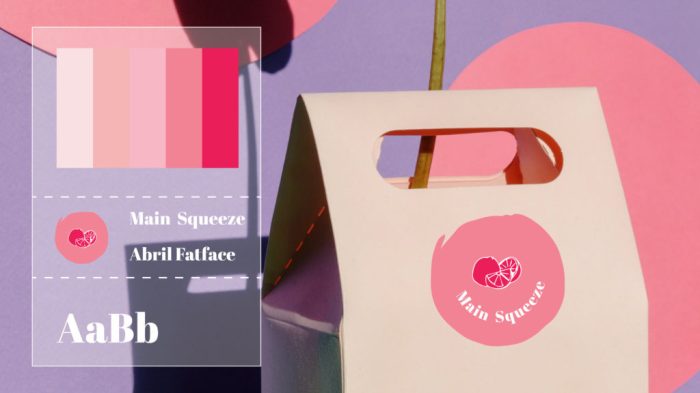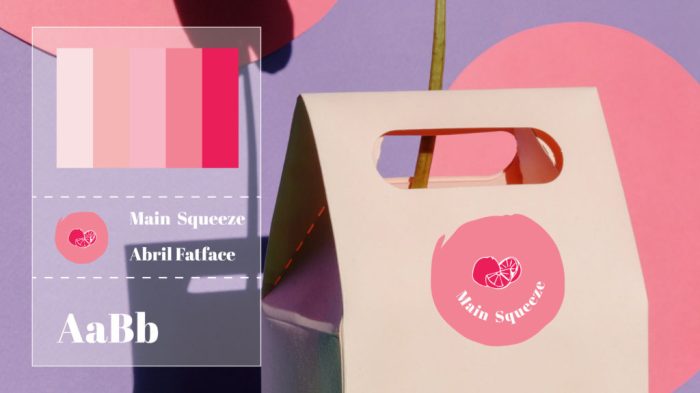Developing a Visual Brand Identity sets the stage for businesses to establish a powerful and recognizable brand image that resonates with their target audience. This journey delves into the intricacies of creating a cohesive visual identity that leaves a lasting impact.
Understanding Visual Brand Identity

Visual brand identity encompasses the visual elements that represent a brand, including logos, colors, typography, and imagery. It is the visual representation of a brand’s values, personality, and messaging.
Importance of Visual Brand Identity
Visual brand identity is crucial for businesses as it helps establish brand recognition, differentiate from competitors, build credibility, and create a memorable impression on customers. Consistent visual branding across all platforms can strengthen brand loyalty and increase brand visibility.
Elements of a Strong Visual Brand Identity
- Logo: A unique and memorable symbol that represents the brand.
- Color Palette: Consistent colors that evoke emotions and convey brand personality.
- Typography: Fonts that reflect the brand’s tone and style.
- Imagery: Visual elements such as photos, illustrations, and graphics that align with the brand’s message.
- Design Style: A cohesive design language that maintains consistency across all brand assets.
Researching Your Target Audience

Understanding your target audience is crucial when developing a visual brand identity. It helps you tailor your design choices to resonate with the people you want to reach, ultimately increasing brand awareness and loyalty.
Methods for Conducting Market Research
Market research can be conducted through surveys, focus groups, interviews, and analyzing online data such as social media insights and website analytics. These methods provide valuable insights into the preferences, behaviors, and demographics of your target audience.
- Surveys: Create online surveys to gather feedback on brand perception, preferences, and purchasing habits.
- Focus Groups: Bring together a small group of individuals to discuss and provide feedback on your brand and visual elements.
- Interviews: Conduct one-on-one interviews with target audience members to delve deeper into their opinions and experiences.
- Online Data Analysis: Utilize tools to track website traffic, social media engagement, and online interactions to understand audience behavior.
Target Audience Influence on Design Choices
The target audience heavily influences design choices for a visual brand identity. Factors such as age, gender, interests, and cultural background impact color schemes, typography, imagery, and overall brand messaging. By aligning design elements with the preferences of your audience, you can create a strong and memorable brand identity that resonates with consumers.
Creating a Brand Style Guide: Developing A Visual Brand Identity
Creating a brand style guide is essential for maintaining brand consistency and ensuring a cohesive visual identity across different platforms. It serves as a blueprint that Artikels the specific guidelines and rules for how your brand should be presented visually to the audience.
Key Components of a Brand Style Guide, Developing a Visual Brand Identity
- Logo Usage: Guidelines on how the logo should be used, including size, placement, and variations.
- Color Palette: Defined colors that represent the brand and how they should be used in various design elements.
- Typography: Specific fonts and styles to be used for headings, body text, and other content.
- Imagery: Guidelines on the types of images and visuals that align with the brand’s aesthetic.
- Tone of Voice: Instructions on the brand’s communication style and messaging.
Significance of a Brand Style Guide
A brand style guide helps in establishing a cohesive visual brand identity across different platforms by providing clear and consistent guidelines for all design and communication efforts. It ensures that all brand elements are used correctly, maintaining a unified look and feel that resonates with the target audience. By following the brand style guide, designers, marketers, and content creators can create a consistent brand experience that builds trust and recognition among consumers.
Designing Visual Assets
When it comes to designing visual assets for your brand, it is crucial to focus on creating elements that are not only visually appealing but also memorable and reflective of your brand identity. Visual assets include logos, color palettes, typography, and imagery, all of which play a significant role in shaping how your audience perceives your brand.
Creating a Logo
Logos are the face of your brand and should be unique, simple, and easily recognizable. Make sure your logo reflects your brand values and resonates with your target audience. Consider working with a professional designer to ensure a high-quality and impactful logo design.
Choosing a Color Palette
Color plays a crucial role in brand recognition and evoking emotions. Select a color palette that aligns with your brand personality and appeals to your target audience. Consistency in using colors across all brand assets helps in establishing a strong brand identity.
Selecting Typography
Typography sets the tone for your brand communication. Choose fonts that are easy to read and align with your brand voice. Consistency in typography across all brand materials creates a cohesive look and enhances brand recognition.
Curating Imagery
Images and graphics are powerful tools for conveying brand messages and connecting with your audience visually. Select imagery that complements your brand values and resonates with your target audience. Consistency in the style and quality of imagery helps in building brand credibility and recall.
Tips for Creating Memorable Visual Assets
– Keep it simple and avoid clutter in design elements.
– Ensure visual assets are scalable and work well across different platforms.
– Test different variations of visual assets with your target audience for feedback.
– Incorporate unique elements that differentiate your brand from competitors.
– Regularly review and update visual assets to stay relevant and fresh.






